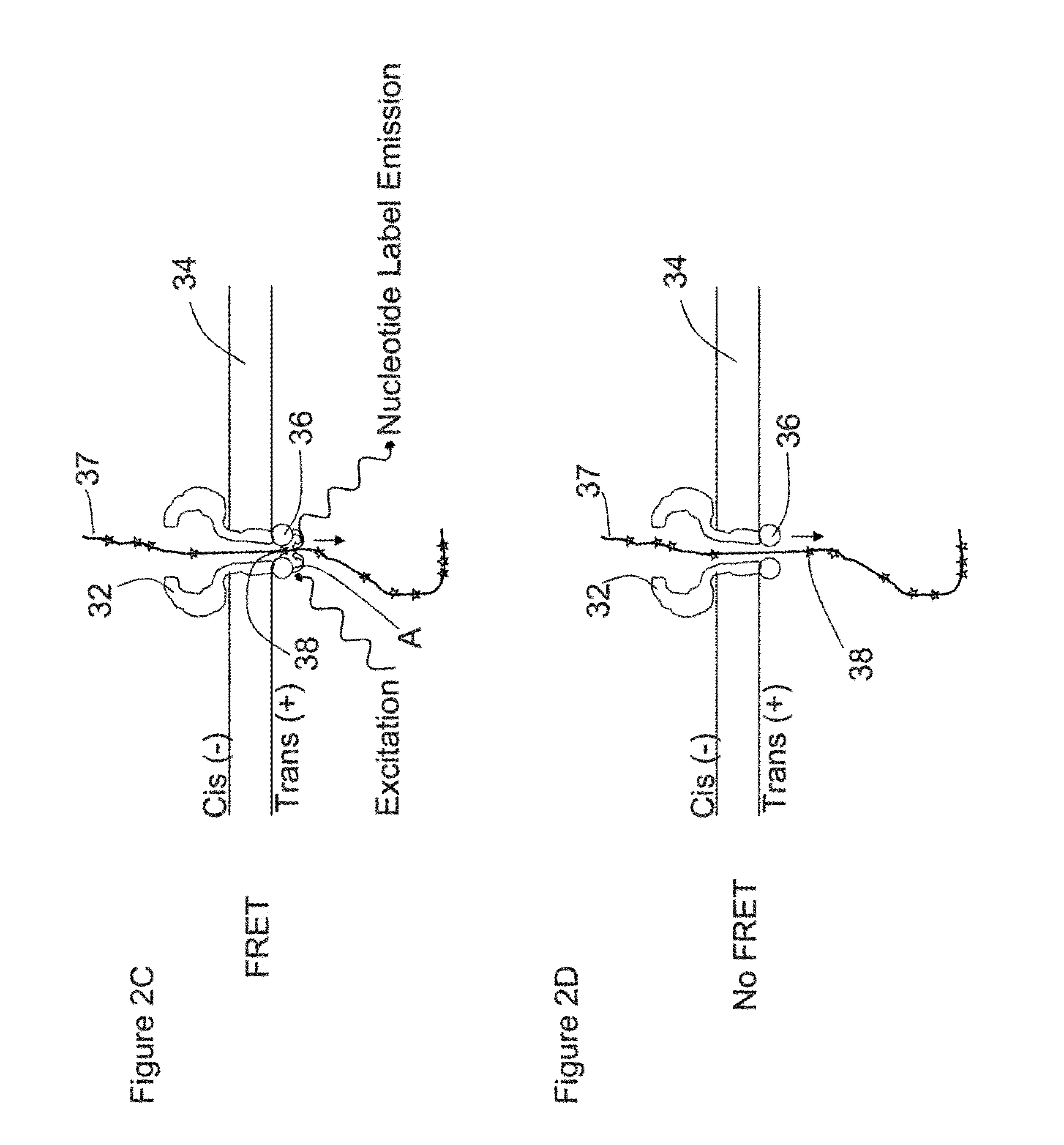Apparatus and methods for performing optical nanopore detection or sequencing
a technology of optical nanopores and optical nanopores, applied in biochemistry apparatus and processes, instruments, material analysis, etc., can solve the problems of limited throughput, high cost of molecular biology reagents, and inconvenient automation, so as to reduce the translocation speed of a molecule, reduce the diameter of the molecule, and reduce the speed of the molecul
- Summary
- Abstract
- Description
- Claims
- Application Information
AI Technical Summary
Benefits of technology
Problems solved by technology
Method used
Image
Examples
Embodiment Construction
[0033]A method and / or system for sequencing a biological polymer or molecule (e.g., a nucleic acid) may include exciting one or more donor labels attached to a pore or nanopore. A biological polymer may be translocated through the pore or nanopore, where a monomer of the biological polymer is labeled with one or more acceptor labels. Energy may be transferred from the excited donor label to the acceptor label of the monomer as, after or before the labeled monomer passes through, exits or enters the pore or nanopore. Energy emitted by the acceptor label as a result of the energy transfer may be detected, where the energy emitted by the acceptor label may correspond to or be associated with a single or particular monomer (e.g., a nucleotide) of a biological polymer. The sequence of the biological polymer may then be deduced or sequenced based on the detection of the emitted energy from the monomer acceptor label which allows for the identification of the labeled monomer. A pore, nanop...
PUM
| Property | Measurement | Unit |
|---|---|---|
| diameter | aaaaa | aaaaa |
| inner diameter | aaaaa | aaaaa |
| inner diameter | aaaaa | aaaaa |
Abstract
Description
Claims
Application Information
 Login to View More
Login to View More - R&D
- Intellectual Property
- Life Sciences
- Materials
- Tech Scout
- Unparalleled Data Quality
- Higher Quality Content
- 60% Fewer Hallucinations
Browse by: Latest US Patents, China's latest patents, Technical Efficacy Thesaurus, Application Domain, Technology Topic, Popular Technical Reports.
© 2025 PatSnap. All rights reserved.Legal|Privacy policy|Modern Slavery Act Transparency Statement|Sitemap|About US| Contact US: help@patsnap.com



